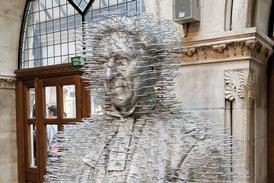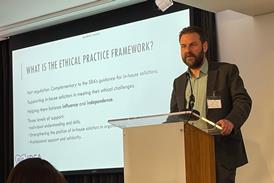Courts will be provided with ‘open justice champions’ to help the public observe proceedings, the chair of a judicial transparency board has vowed. Mr Justice Nicklin has said he is working to ensure the justice system is functioning transparently, accessibly and accountably.
Last year, Nicklin was appointed chair of the judiciary’s Transparency & Open Justice Board, the mission of which is to ‘embed open justice into the daily workings of every Court and Tribunal in England and Wales’.

In a speech at Green Templeton College in Oxford last night, the High Court judge outlined a series of key objectives for the board, including promoting public understanding of open justice, harnessing technology for transparency and improving access to court documents.
Nicklin, who is also head of the High Court’s media & communications list, said the increased use of remote proceedings had the potential to inadvertently create private hearings. He said HMCTS needed to have sufficient resources to process requests by journalists, legal bloggers and members of the public who wanted to observe remote hearings.
‘The board and HMCTS are aware that there can be issues with people gaining timely access to remote hearings’, Nicklin said. ‘HMCTS are working to provide “open justice champions”. They will be regionally based, and it is intended that they will provide a single point of contact to assist in resolving open justice issues.’
Although Nicklin did not provide further details in his speech, the Gazette understands the 'champions' will be mid-level civil servants who will be responsible for giving people resources and information. At a regional level, the champions will assist court staff in understanding what can and cannot be provided to the public.
Nicklin added: ‘The provision of documents about court proceedings using digital platforms shows the central importance of digitisation of courts and tribunals not only to their efficiency and accessibility but to the delivery of open justice.’
The judge cited the US federal court system's digital case management and public access platform PACER (Public Access to Court Electronic Records) - which provides access to over 1 billion documents from federal appellate, district, and bankruptcy courts - as a model for transparency.
He said work is underway in this jurisdiction to try to ensure most documents which enter the public domain also enter the electronic filing system and become accessible via the public facing side of the CE File system – in the way that claim forms, pleadings and orders are already, with a draft pilot scheme in the final stages of drafting.
Nicklin was speaking at an event hosted by the Courts and Tribunals Observers’ Network and the Sheila Kitzinger Programme, which brought together court observers and policy makers to discuss barriers to open justice.
This article is now closed for comment.





























10 Readers' comments